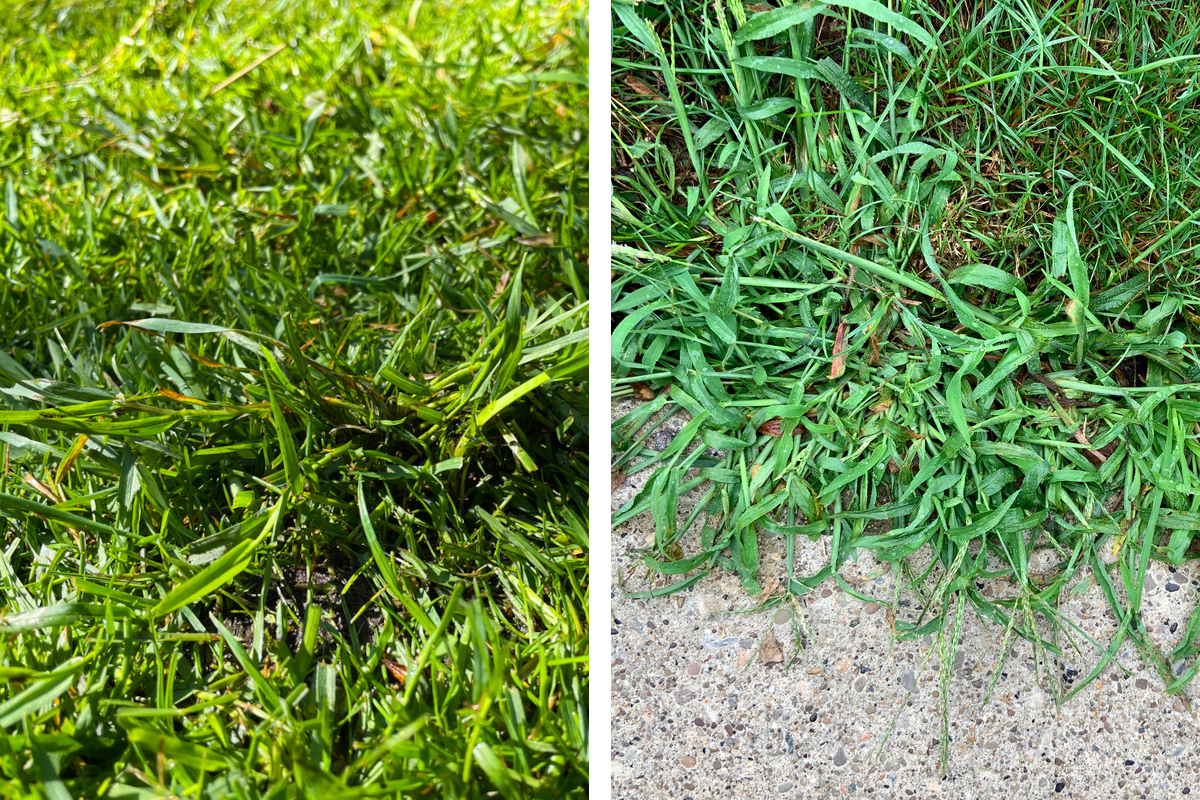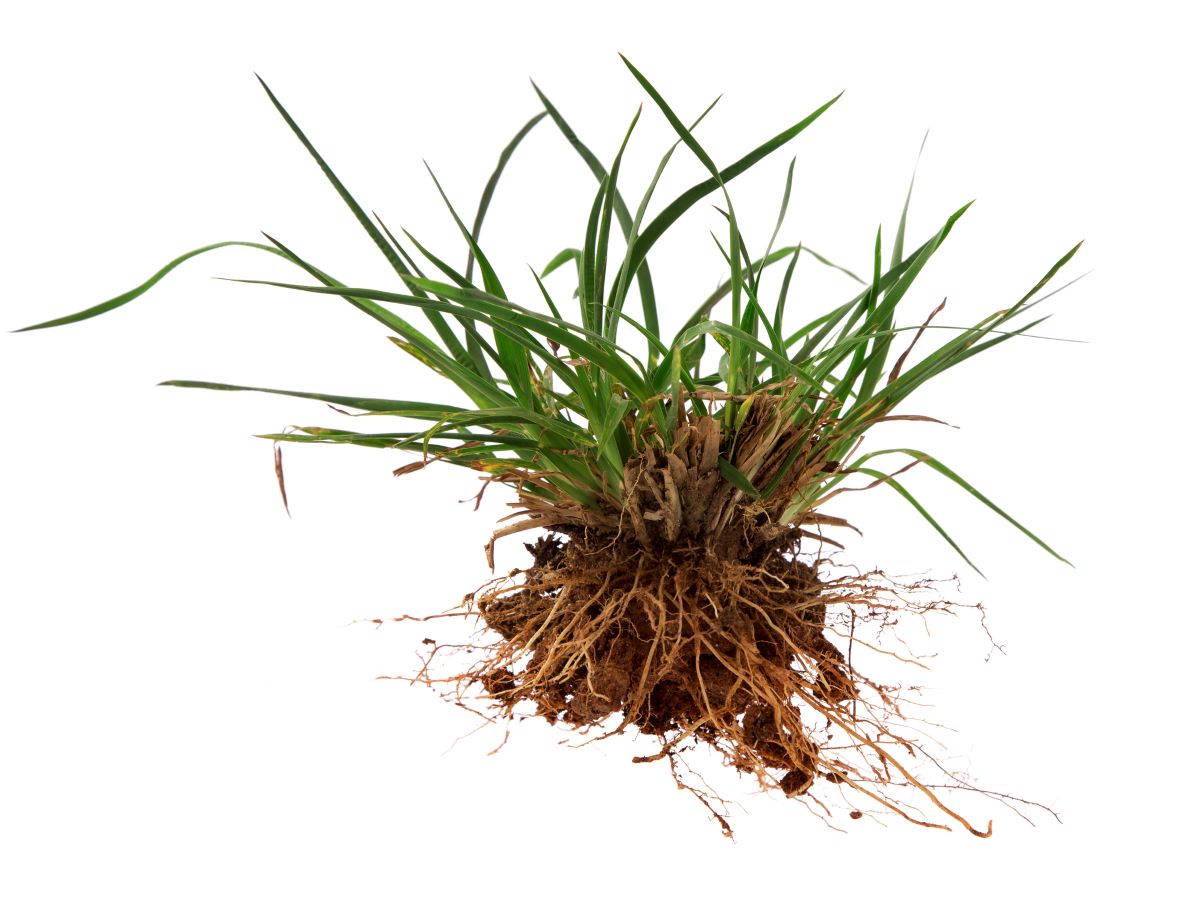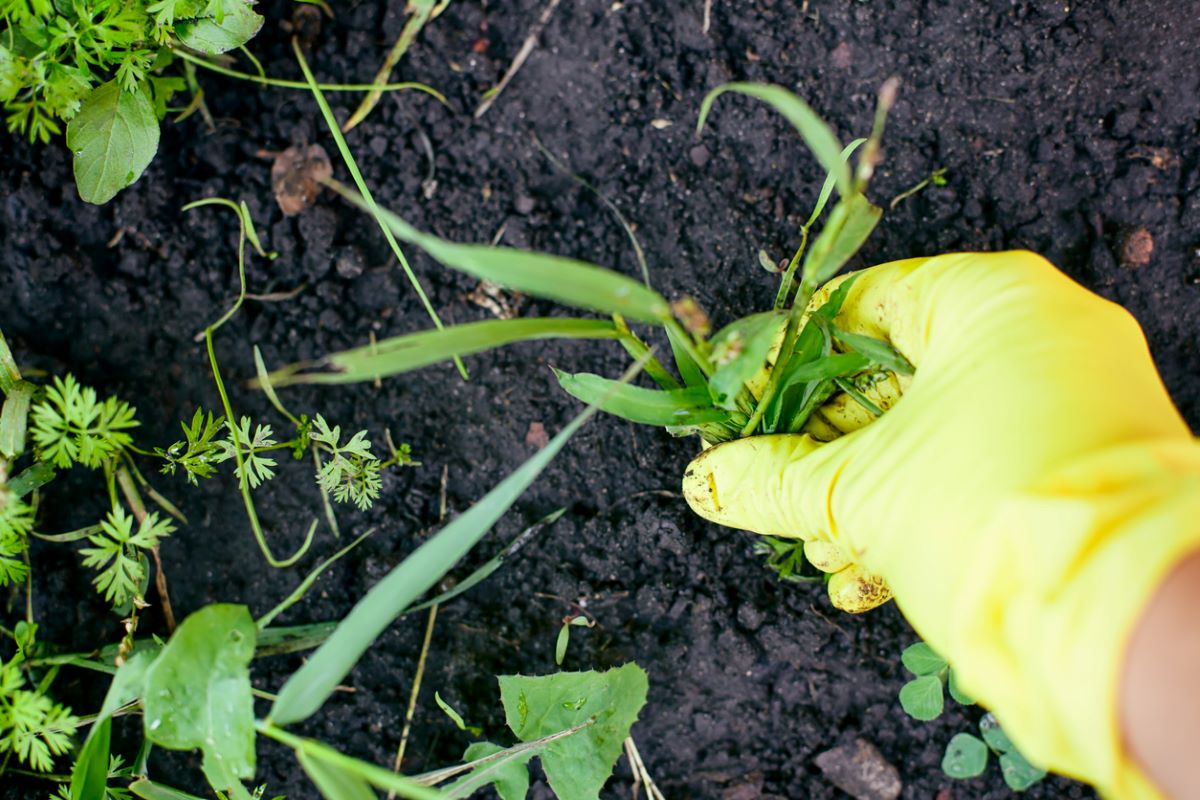

We may earn revenue from the products available on this page and participate in affiliate programs. Learn More ›
Are you arguing with your neighbors about which type of weedy grass is taking over your lawns? In the quackgrass vs. crabgrass debate, nobody is a winner; either of those coarse and ubiquitous grasses can mar your previously immaculate turf or infest your once well-groomed flower beds. And both are likely to be growing somewhere on your property. Controlling them can be challenging, though, as they self-sow prolifically. So, if you want to get rid of them, you’d better not let the grass grow under your feet!
RELATED: Keep, Don’t Kill: 9 Weeds to Welcome
Quackgrass is a cold-hardy perennial plant, while crabgrass is a warm-season annual.
What is quackgrass? Hardy from USDA zones 3 through 9, this tall perennial grass (aka Elymus repens or couch grass) can survive winter in those areas to afflict your lawn again in the spring, both with old plants and new seedlings.
What is crabgrass? Coming in both large (Digitaria sanguinalis) and smooth (Digitaria ischaemum) species, it is a low-growing annual grass that likely will die after the first autumn frost, but that doesn’t mean it is gone for good. All the thousands of seeds it sowed before its demise will sprout in spring unless you take steps to prevent that happening.
Both quackgrass and crabgrass are wide-bladed grasses, but quackgrass leaves have auricles.
What does quackgrass look like? An upright grower that usually is a little bluer in color than turf grass, quackgrass can grow to 4 feet high when not cut and often has auricles (clasping white ear-like projections) at the bases of its leaves. For quackgrass identification, keep in mind that its 2- to 8-inch seed pods resemble wheat, with those seeds ripening in late summer to early autumn.
What does crabgrass look like? Although it can reach 2 feet high for the large variety, and 6 inches high for the smooth, crabgrass lacks auricles and tends to lie prostrate, rooting at the nodes of segmented stems that resemble crab legs. You can confirm crabgrass identification by the lime green hue of its seedlings as compared to darker turfgrasses. Each plant makes three to five seed spikes, which can produce thousands of seeds. Another annual grass that looks like crabgrass is goosegrass, but it has flat white stems.
RELATED: 5 Things to Do With Weeds After You Pull Them

Crabgrass grows from fibrous root clumps, whereas quackgrass grows from horizontal rhizomes.
Crabgrass roots are fibrous. According to Merriam Webster, a fibrous root means “a root (as in most grasses) that has no prominent central axis and that branches in all directions.” Unfortunately, quackgrass isn’t one of those “most grasses,” since it produces rhizomes—resembling long horizontal roots—that grow in the top 6 to 8 inches of soil and can stretch 3 to 5 feet in length.
That’s why, when you rip up quackgrass, you might accidentally rip up the turf or garden plants surrounding the weed too. According to Purdue University, it also “has been shown to be allelopathic, which means it releases chemicals that inhibit the growth of other plants.” So, when determining whether you have crabgrass vs. quackgrass, keep in mind that, if it pulls easily, it probably is crabgrass.
Maintaining healthy turfgrass is the best solution for eliminating both quackgrass and crabgrass.
Thick and healthy turfgrasses can crowd out the weedy types and prevent their sprouting. To preserve your lawn’s peak health, maintain its soil pH at 6 to 6.5, be sure to choose grasses suited for your climate, and use shady areas for flower beds instead of lawn since turfgrasses won’t grow well there.
Don’t scalp your lawn. Instead, keep your grass at least 3 inches high and cut no more than a third of its height each time you mow. Keep your mower blades sharp to avoid mangling the grass blades. Also, aerate, dethatch, and reseed the lawn when necessary to keep it green and growing.
RELATED: 10 Tips for Pulling Weeds and Keeping Them Out of Your Yard

Hand-pulling, high mowing, and smothering are viable options for getting rid of weed grasses without harsh chemicals.
Although labor intensive, hand-pulling is one of the most environmentally friendly ways to kill weeds. You’ll want to tackle it when the soil is moist but not muddy, so that the plants come up easily. You also might be able to smother the grasses by cutting them short, covering them with heavy cardboard, and piling several inches of mulch atop them—if you don’t mind the fact that the cardboard will kill all other plants or turf beneath it, too.
When considering how to get rid of crabgrass, keep in mind that maintaining your lawn grasses at 3 to 4 inches in height discourages the germination of this annual, which must sow itself to survive. That height both shades the soil and keeps it cool to prevent new grasses from sprouting.
Pre-emergent crabgrass herbicides are effective, but preventive options are more environmentally friendly.
Although use of the right pre-emergent herbicides can help control crabgrass, they can introduce harsh chemicals. They also only work on new seeds before they emerge; these herbicides won’t destroy existing crabgrass in a lawn. If you intend to apply a pre-emergent crabgrass herbicide, do so in early spring at about the time forsythia bushes are blooming in your area. Although such an herbicide should finish off emerging crabgrass seedlings, it also will kill any other new grass seedlings and can harm the roots of your turfgrasses if overapplied.
To suppress crabgrass without having to resort to an herbicide, look in autumn for areas in your lawn where that grass has died out and immediately reseed those bare patches with turfgrass seed to prevent crabgrass from germinating there in spring. Fertilize your lawn in autumn rather than during summer to prevent feeding the annual grass. And, when you water your lawn during spring and summer, water it deeply only once per week rather than shallowly every day, since shallow watering keeps the soil surface wet and encourages the sprouting of crabgrass.
RELATED: Does Vinegar Really Kill Weeds?
